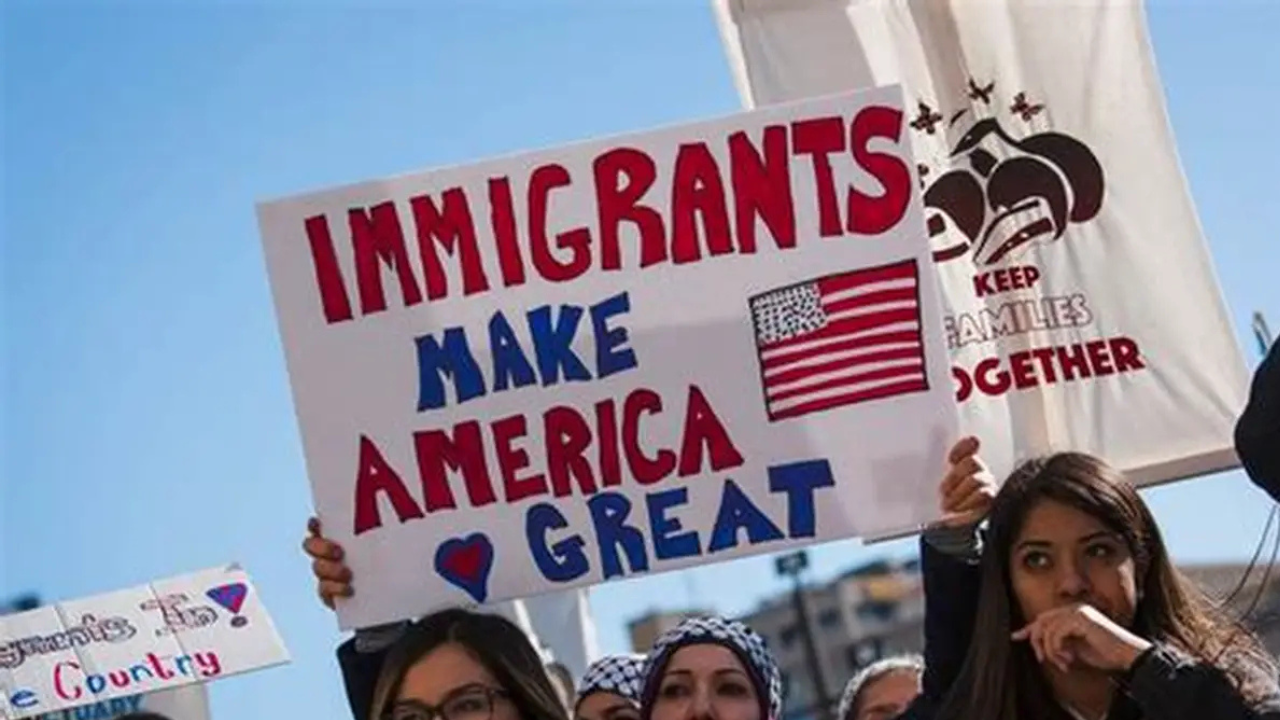A New Era of Fear for Immigrants
A New Era of Fear for Immigrants : Green card holder Cesar, who attends Georgetown University in Washington, DC, never believed he required to carry documentation proving his eligibility to remain in the country. For him, having legal residency status was enough, and the thought of being stopped or questioned by law enforcement seemed like a distant worry.
But everything changed last week when the U.S. Supreme Court cleared the way for a person’s ethnicity to be considered a factor in immigration stops. For immigrants like Cesar, the decision immediately reshaped daily life. “Now I have to carry it all the time,” he says, referring to his green card.
The fear is not only about being stopped — it is also about the consequences of losing critical documents. “That is very scary, because if I lose it, that’s a whole other process, fees, and consequences,” Cesar explained. Speaking to CNN on the condition that only his first name be used, he represents the growing anxiety shared by many immigrants in America.
Since the beginning of President Donald Trump’s second term, immigration-advocacy groups have been advising migrants, green-card holders, and even non-White U.S. citizens to carry their documents at all times. The advice, once seen as an extreme precaution, has now become a necessary safeguard against being caught up in Trump’s intensified immigration sweeps.
For people like Cesar, this new reality is burdensome. Losing documents could mean long waits, high replacement fees, and the risk of being unfairly detained despite holding legal status. The Supreme Court’s decision on September 8 that allowed the Trump administration to keep what detractors refer to as “roving” immigration patrols in California has raised the stakes.
According to immigrant-rights advocates, the decision is not just about policy — it is about power, profiling, and how federal agents may exercise judgment over who they think belongs in the country. Many fear this ruling has effectively endorsed racial profiling, turning ethnicity, language, or even place of work into grounds for suspicion.
A History of Racial Profiling Concerns
Immigrants and advocates have linked this ruling to America’s long and troubled history of alleged racial profiling. They recall policies such as stop-and-frisk in major U.S. cities, which disproportionately targeted minorities, as well as government surveillance of mosques and Muslim communities after the 9/11 attacks.
Cesar summed it up: “This makes what we’ve already noticed true. It just put it on paper.”
What the Supreme Court Decision Overturned
In its emergency ruling, the conservative-majority Supreme Court rejected earlier rulings by lower courts. Those courts had previously blocked parts of Trump’s immigration operations in Southern California, where armed and masked ICE agents sometimes pulled aside people who looked Latino to ask if they were U.S. citizens.
The overturned rulings had prohibited immigration stops based solely on four factors:
The race of the person being stopped
Whether they spoke Spanish or accented English
Their presence in areas frequented by immigrants
Their employment in jobs usually held by immigrants
By removing these restrictions, the Supreme Court’s decision could now be interpreted as a green light for similar operations across the country.
Expanding Enforcement Nationwide
While the case focused only on seven counties in Southern California, its impact could extend nationwide. Cities like Chicago, Washington, D.C., and Boston — where the administration has already increased enforcement — are expected to feel the effects. In Memphis, Trump has gone further, pledging to deploy the National Guard along with federal immigration officers.
Immigration attorneys, legal residents, and non-White U.S. citizens fear that ordinary activities — such as speaking Spanish, working in certain industries, or simply “looking Latino” — could now become grounds for questioning.
“This is going to affect everyone,” said Boston-based immigration attorney Jennifer Bade. “It doesn’t matter whether you’re documented, undocumented, or a citizen. It makes us a ‘show-your-papers’ nation.”
Government’s Position: A Win for Safety
The Department of Homeland Security (DHS), which oversees ICE, praised the Supreme Court’s decision. Spokesperson Tricia McLaughlin described it as “a win for the safety of Californians and the rule of law,” emphasizing that enforcement will continue to target “murderers, rapists, gang members, and other criminal illegal aliens.”
Critics, however, argue that while serious criminals must be pursued, the ruling blurs the line between crime control and racial profiling, leaving law-abiding immigrants vulnerable.
Taking Extra Precautions in Daily Life
Andrea, a Venezuelan woman living in Washington, D.C., and working as a government contractor, said the decision shows how race and language can now serve as pretexts for suspicion. She and her friends have already begun to adapt.
Walking along the National Mall recently, Andrea said, “We made it a point not to speak Spanish.” Her fear echoes that of many immigrants who believe that appearance, accent, and cultural identity could now put them at risk.
A Climate of Fear in Los Angeles
In Los Angeles, Francisco Moreno, executive director of the Council of Mexican Federations in North America and a naturalized U.S. citizen, said he has been carrying his citizenship card since widespread immigration raids began in June.
He clarified, “I don’t know if they’re going to stop me at some point, ask me questions just because I’m brown, because I speak Spanish, or because I’m also an immigrant advocate.” “We’re all fearful of the worst, and that’s what daily life feels like here.”








